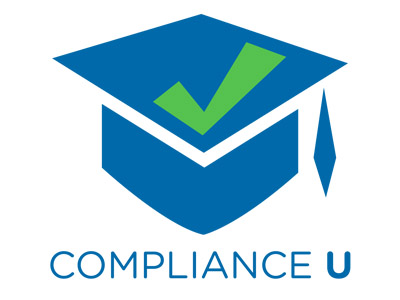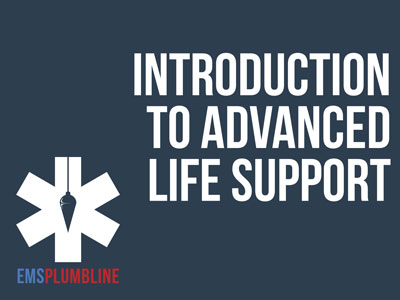 |
Preventing Slips, Trips and Falls: A Training Program for Small Business (Corrections) |
0.67 |
The Preventing Slips, Trips and Falls course focuses on helping small business owners and their employees identify, evaluate and control the hazards in their workplaces that may cause slips, trips and falls. Designed to increase and improve participants' knowledge, skills and access to valuable resources, this course will assist them in establishing systems that can help them prevent slips, trips and falls. Participants will learn how to prevent, recognize, evaluate, and control slip, trip and fall hazards, as well as develop their own learning goals and action plans. |
 |
Preventing Slips, Trips and Falls: A Training Program for Small Business |
0.67 |
The Preventing Slips, Trips and Falls course focuses on helping small business owners and their employees identify, evaluate and control the hazards in their workplaces that may cause slips, trips and falls. Designed to increase and improve participants' knowledge, skills and access to valuable resources, this course will assist them in establishing systems that can help them prevent slips, trips and falls. Participants will learn how to prevent, recognize, evaluate, and control slip, trip and fall hazards, as well as develop their own learning goals and action plans. |
 |
2019 Collaborative Advanced Life Support Adult and Pediatric Treatment Protocols |
3.00 |
The protocol changes that are listed in this lesson were developed by a committee of your ALS peers and Medical Directors from around NYS. A great deal of thought went into this project, and we would like to give you a little insight into how we came to this point. Dr. Jeremy Cushman has been involved in drafting EMS protocols for nearly two decades. His experience with the NYS Collaborative Protocol Projects will certainly lead to discussion within your coworkers.
Final Exam: These ten questions are NOT meant to summarize the entire set of protocols. Please take your time and answer carefully. These questions will spark further discussion and lead to improved care within your region. An 80% or higher is required to obtain a passing score. You have two attempts to gain this score. |
 |
Animal Welfare - General Audience - Short Course |
0.33 |
The public’s interest in animal welfare is increasing. This short course is designed for all non-animal care staff and features the same but condensed content as presented in the original Animal Welfare Professional version. This short version aims to educate non-animal care staff about animal welfare, how it is measured on a continuum from good to poor and about our efforts to ensure our animals are thriving. Staff who interact with our guests, are ideally positioned to share this important information with our guests. This fast-paced, 20-minute course is designed to equip our employees with key information on the subject of animal welfare. |
 |
Creativity and Innovation: Promoting Team Creativity (Instructor Guide) |
1.34 |
The purpose of a team is to bring together people with diverse personalities, knowledge, education, and experience. This combined diversity encourages creativity and productivity to accomplish a common goal. Teams might consist of people from a single department or several departments.
Teams can generate new ideas, expand on or improve current ideas, make decisions, and solve problems. Teams can also be assigned to a specific task or be made responsible for a broader area, such as responding to changing customer expectations. When team members recognize their roles in a team, and the manager performs his responsibilities, creativity has a better chance of flourishing.
In this course you will learn to: identify characteristics of creative teams, and manage these teams effectively, conduct creative team sessions, and conduct brainstorming sessions, and use creativity to solve problems.
This Instructor's Edition of this course includes notes and suggestions to assist you in presenting the material, whether in an in-person classroom setting, or as an instructor-led online or distance-learning course. It also provides you with the answers to questions found in mid-lesson activities, as well as in the quiz that concludes the course. |
 |
Creativity and Innovation: Promoting Team Creativity |
1.34 |
The purpose of a team is to bring together people with diverse personalities, knowledge, education, and experience. This combined diversity encourages creativity and productivity to accomplish a common goal. Teams might consist of people from a single department or several departments.
Teams can generate new ideas, expand on or improve current ideas, make decisions, and solve problems. Teams can also be assigned to a specific task or be made responsible for a broader area, such as responding to changing customer expectations. When team members recognize their roles in a team, and the manager performs his responsibilities, creativity has a better chance of flourishing.
In this course you will learn to: identify characteristics of creative teams, and manage these teams effectively, conduct creative team sessions, and conduct brainstorming sessions, and use creativity to solve problems. |
 |
The Indian Child Welfare Act |
1.00 |
The purpose of the Indian Child Welfare Act (ICWA) is to protect the rights of Native American communities and prevent Native American children from being unjustifiably removed from their families. This course will give you a general knowledge of how ICWA contributes to the preservation of Native American culture. |
 |
Supporting Family Caregivers of Older Adults |
0.50 |
The purpose of this course is to describe the importance of supporting family caregivers of older adults. Specifically, content will describe ways to identify the needs of different family caregiver systems by conducting a caregiver assessment. The core elements of a family caregiver assessment will be reviewed. |
 |
Media and Social Media Best Practices |
0.25 |
The purpose of this course is to ensure you are aware of organizational best practices in regard to contact with Media, and use of Social Media. This policy is intended to support ALL employees and volunteers in making the best decisions for the organization. |
 |
Train-the-Trainer: Training Methods |
0.25 |
The purpose of this course is to provide the education and tools needed so that participants will be able to effectively deliver safety and health training to their workers. By the end of this course participants will be able to explain the different titles of a teacher, determine positive classroom control measures, examine diversity and stereotypes, describe training delivery methods, analyze questioning types and techniques, demonstrate the use of training aids, define how to empower the adult learner, and illustrate the proper use of assessments and critiques. |











